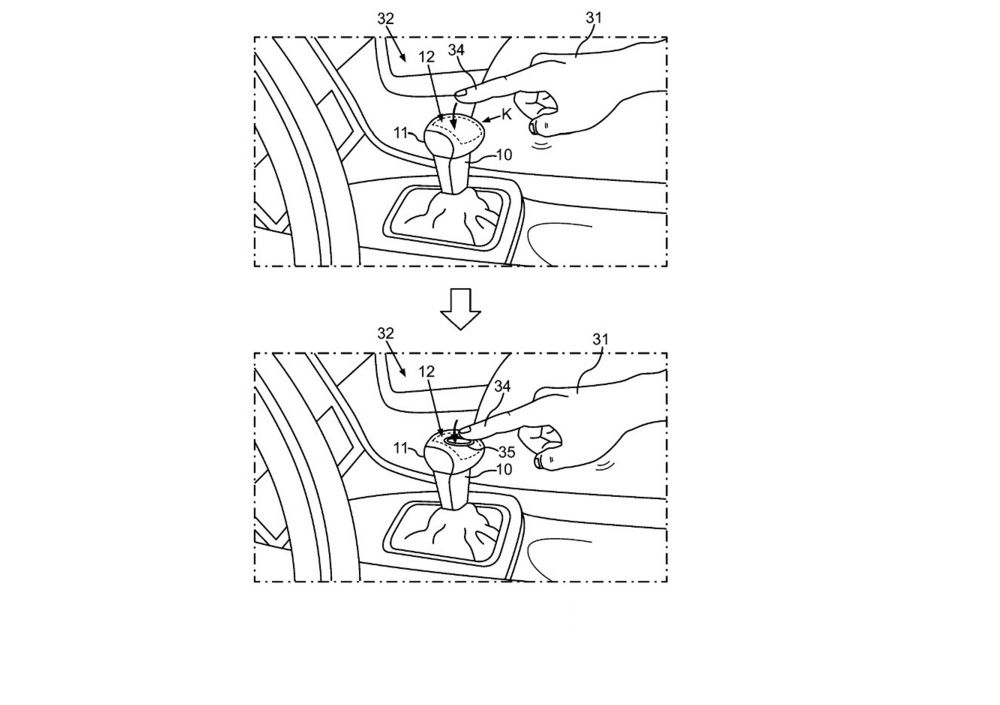The recent rise of autonomous driving technology has provided automakers the chance to conjure up new and exciting self-driving technologies in order to make first impressions in the burgeoning segment. Some companies have hunkered down to develop software systems while others have gotten into partnerships to accelerate their own development of the tech. Then there’s Volkswagen, which recently took the first step in developing a technology that allows drivers to configure a car’s automatic drive setup without having to disengage the self-driving mode altogether.
The German automaker filed the patent application in Germany with the main feature being a touch-sensitive control situated at the top of the gear shifter knob. The driver can use the control to manipulate certain automatic drive settings that the car will abide by. For instance, in times where the system detects a situation that needs input from the driver, it presents multiple options on how the driver would want to proceed. These could include speeding up to pass a slow-moving vehicle ahead or queueing behind the vehicle and remaining in the lane. The system recognizes when an option has been chosen through specific hand gestures. Taking from the same example, a driver could swipe horizontally to signal the system to pass the vehicle ahead or swipe vertically if he wants to remain in the same lane.
The patent also details other unique features about the technology, including a ring of lights around the touch screen device that changes hues depending on the urgency of making a decision. A blue hue, for example, could mean that there’s still ample time to make a decision on what the autonomous technology should do and a red hue could mean that a decision has to be made as soon as possible lest the system disengages its self-driving capabilities. There’s also a separate feature located on the gear shifter knob itself, which appears to suggest a feature that allows a driver to disengage the self-driving feature by pressing a button on top of the knob.
The technology isn’t expected to be included in Volkswagen models anytime soon. Since it’s still in the application phase, VW has yet to get a patent over the technology and even if it does receive the green light from the European Patent Office, there’s no telling how quickly the German automaker can develop the technology for actual production use. That said, the patent does highlight the steps VW is making to get ahead of the autonomous driving technology curb.
Continue after the jump to read the full story.
Innovation at its finest
The whole concept of giving drivers control of self-driving cars is nothing new. In fact, that’s what Tesla is doing right now with its Autopilot system. But having a system that pushes that cooperation to the next level is a fresh approach that will likely be embraced by the industry in the event this patent does end up getting made.
The setup isn’t meant to give total control on both sides because neither the driver nor the computer will do all the heavy lifting. Instead, Volkswagen has come up with a way for self-driving cars to function the way they’re intended yet still give drivers the responsibility of choosing certain actions depending on the specific situations on the road. The example that was used about a slow-moving car ahead is a good one because it’s a common occurrence in the road. When that situation pops up, the computer gives the driver the opportunity to choose which course of action to take.
If there’s any concern I have with the patent, it’s the swiping gestures that confirms a specific command. Anybody who has a smartphone will attest that swiping gestures can be tricky at times because there’s no telling what a specific “swipe” is going to look like. If a driver swipes one way and the computer interprets it another way, that could turn into a big problem, especially with so many moving parts on the road. The supposed sensor on the gear shifter knob could also have some issues since a lot of drivers habitually put their hands on the knob to either use them or rest their hands on them.
I know it’s nit-picking to point all of these out, but given where the industry is right now when it comes to autonomous driving technology, it’s not wrong to think that all scenarios should be considered and if necessary, scrutinized.

